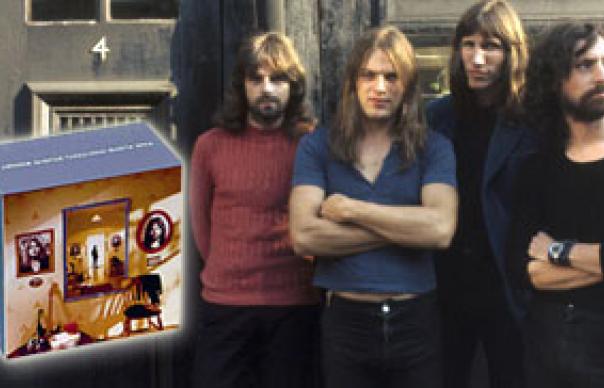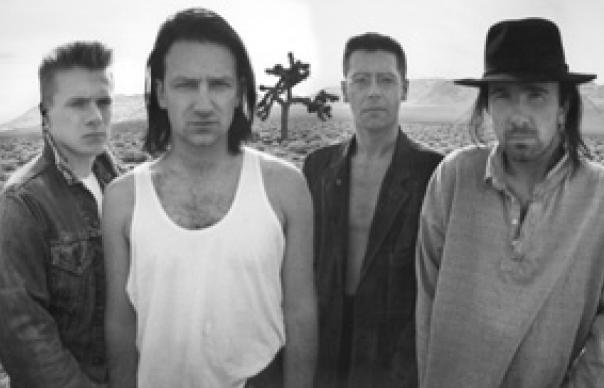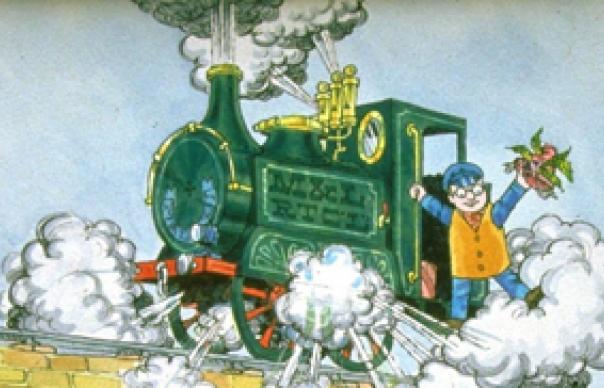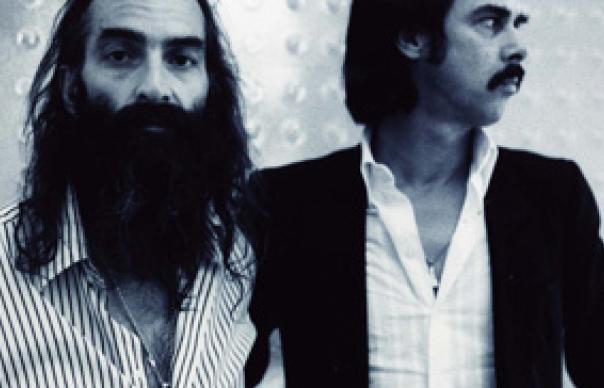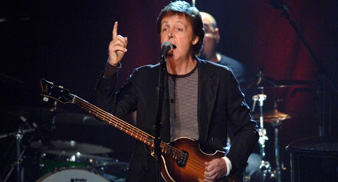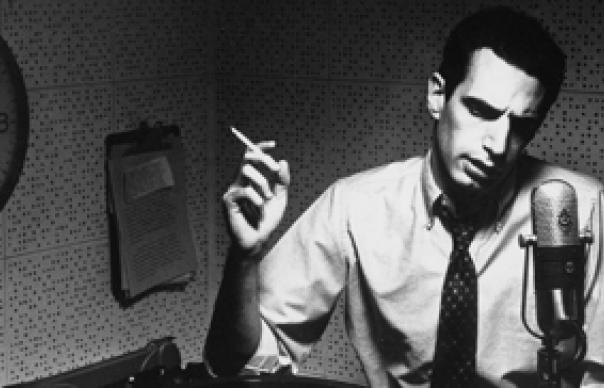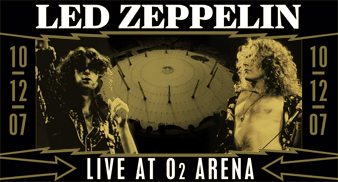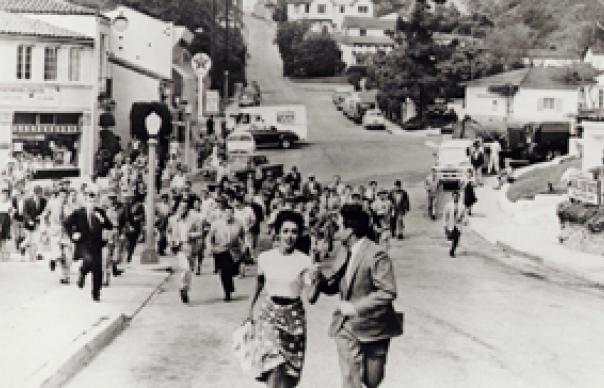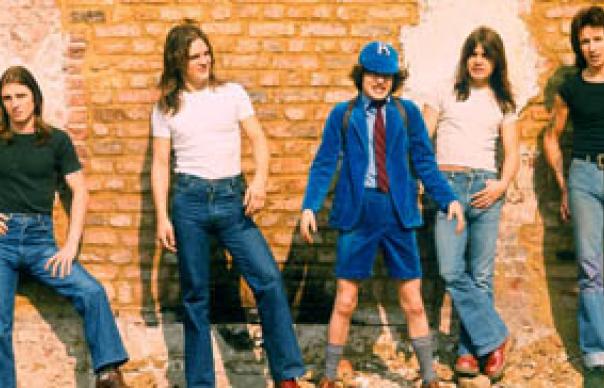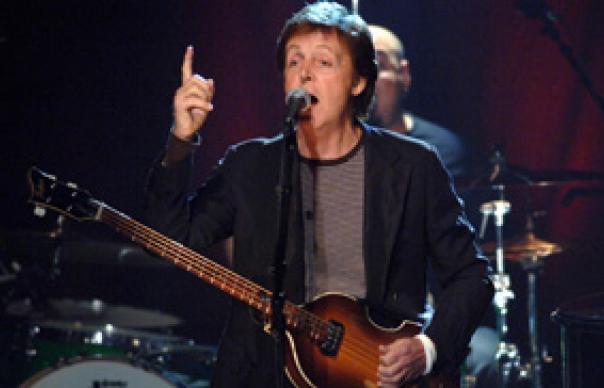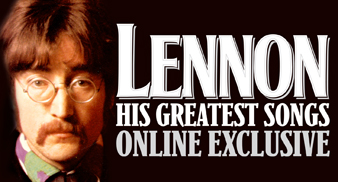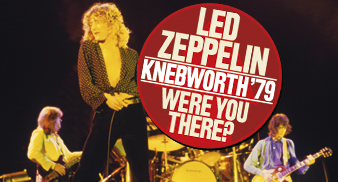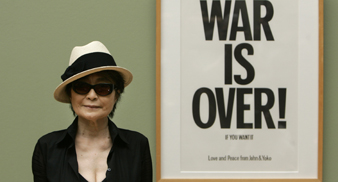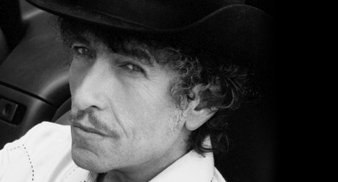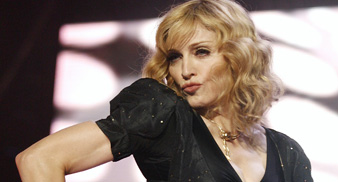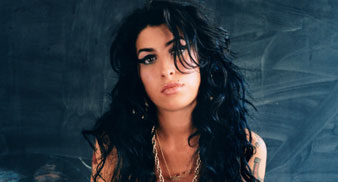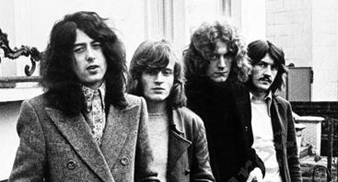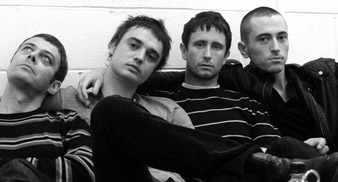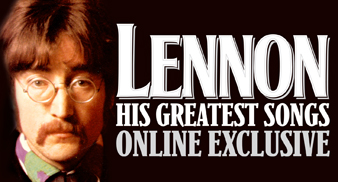Fetch the helium balloons, face paints and mobile disco. After years of rancour and torpor, Pink Floyd suddenly can’t stop celebrating. First came September’s 40th anniversary reissue of The Piper At The Gates Of Dawn. Now cop a load of this mammoth, 16-CD ‘instant Floyd collection’, containing mini-vinyl reproductions of all their studio albums (1967–94): a deluxe, executive, gold-member, £145 crash course in Floyd. The patient is strapped down. For the next 11 hours he will listen to the entire box set in chronological order, with no toilet breaks, human contact or wine. His experiment begins with Piper…, a space probe viewed from a child’s nursery, which alternately soothes and scares him (heartbeat: placid, berserk). He quickly impresses the doctors by reappraising the not-so-exalted A Saucerful Of Secrets, muttering: “You can hear how they took three bass-notes from the middle of ‘Interstellar Overdrive’ and devised a sort of speculative, post-Barrett, cosmic-progressive franchise for themselves to build on.” If the film soundtrack More and ‘studio’ half of Ummagumma (heartbeat: sluggish) don’t hold his attention (“undercooked, run-of-the-mill atmospherics”), he perks up during the latter’s ‘live’ half (“genuinely spooky”) and towards the end of Atom Heart Mother (heartbeat: inert) when we wake him with electric shocks (“yaaaaarrgh”). The sequence Meddle–Dark Side Of The Moon–Wish You Were Here meets with apparently sincere approval (“say what you like, the meticulous craftsmanship is to die for”) and special, if unusual, praise is reserved for the 1972 album Obscured By Clouds (“very much their ‘fuck you’ garage-rock classic”). The bleak Animals (1977), despite doctors’ concerns, stimulates him into forthright social comment (“more punk than punk, really”), but he baulks at The Wall and requires heavy sedation (“Roger Waters and Bob Ezrin at their tasteless, pompous worst”). He sleeps through The Final Cut, probably for the best, and, though revivified, his intravenous drip detaches itself midway through A Momentary Lapse Of Reason (“those mid-’80s productions… I’ve just remembered an urgent chiropodist’s appointment”). He is administered freebase cocaine to keep him alive during The Division Bell (“zzzzzz”). Further patient notes: “No outtakes, no ‘Vegetable Man’, chiz chiz”, “SO MUCH UNDERACHIEVEMENT: IRONY?”, “Remarkable how Nick Mason goes from primitive–African nutter to most banal drummer on earth in 2 yrs”. DAVID CAVANAGH
Fetch the helium balloons, face paints and mobile disco. After years of rancour and torpor, Pink Floyd suddenly can’t stop celebrating. First came September’s 40th anniversary reissue of The Piper At The Gates Of Dawn. Now cop a load of this mammoth, 16-CD ‘instant Floyd collection’, containing mini-vinyl reproductions of all their studio albums (1967–94): a deluxe, executive, gold-member, £145 crash course in Floyd.
The patient is strapped down. For the next 11 hours he will listen to the entire box set in chronological order, with no toilet breaks, human contact or wine. His experiment begins with Piper…, a space probe viewed from a child’s nursery, which alternately soothes and scares him (heartbeat: placid, berserk). He quickly impresses the doctors by reappraising the not-so-exalted A Saucerful Of Secrets, muttering: “You can hear how they took three bass-notes from the middle of ‘Interstellar Overdrive’ and devised a sort of speculative, post-Barrett, cosmic-progressive franchise for themselves to build on.”
If the film soundtrack More and ‘studio’ half of Ummagumma (heartbeat: sluggish) don’t hold his attention (“undercooked, run-of-the-mill atmospherics”), he perks up during the latter’s ‘live’ half (“genuinely spooky”) and towards the end of Atom Heart Mother (heartbeat: inert) when we wake him with electric shocks (“yaaaaarrgh”). The sequence Meddle–Dark Side Of The Moon–Wish You Were Here meets with apparently sincere approval (“say what you like, the meticulous craftsmanship is to die for”) and special, if unusual, praise is reserved for the 1972 album Obscured By Clouds (“very much their ‘fuck you’ garage-rock classic”).
The bleak Animals (1977), despite doctors’ concerns, stimulates him into forthright social comment (“more punk than punk, really”), but he baulks at The Wall and requires heavy sedation (“Roger Waters and Bob Ezrin at their tasteless, pompous worst”). He sleeps through The Final Cut, probably for the best, and, though revivified, his intravenous drip detaches itself midway through A Momentary Lapse Of Reason (“those mid-’80s productions… I’ve just remembered an urgent chiropodist’s appointment”). He is administered freebase cocaine to keep him alive during The Division Bell (“zzzzzz”).
Further patient notes: “No outtakes, no ‘Vegetable Man’, chiz chiz”, “SO MUCH UNDERACHIEVEMENT: IRONY?”, “Remarkable how Nick Mason goes from primitive–African nutter to most banal drummer on earth in 2 yrs”.
DAVID CAVANAGH


